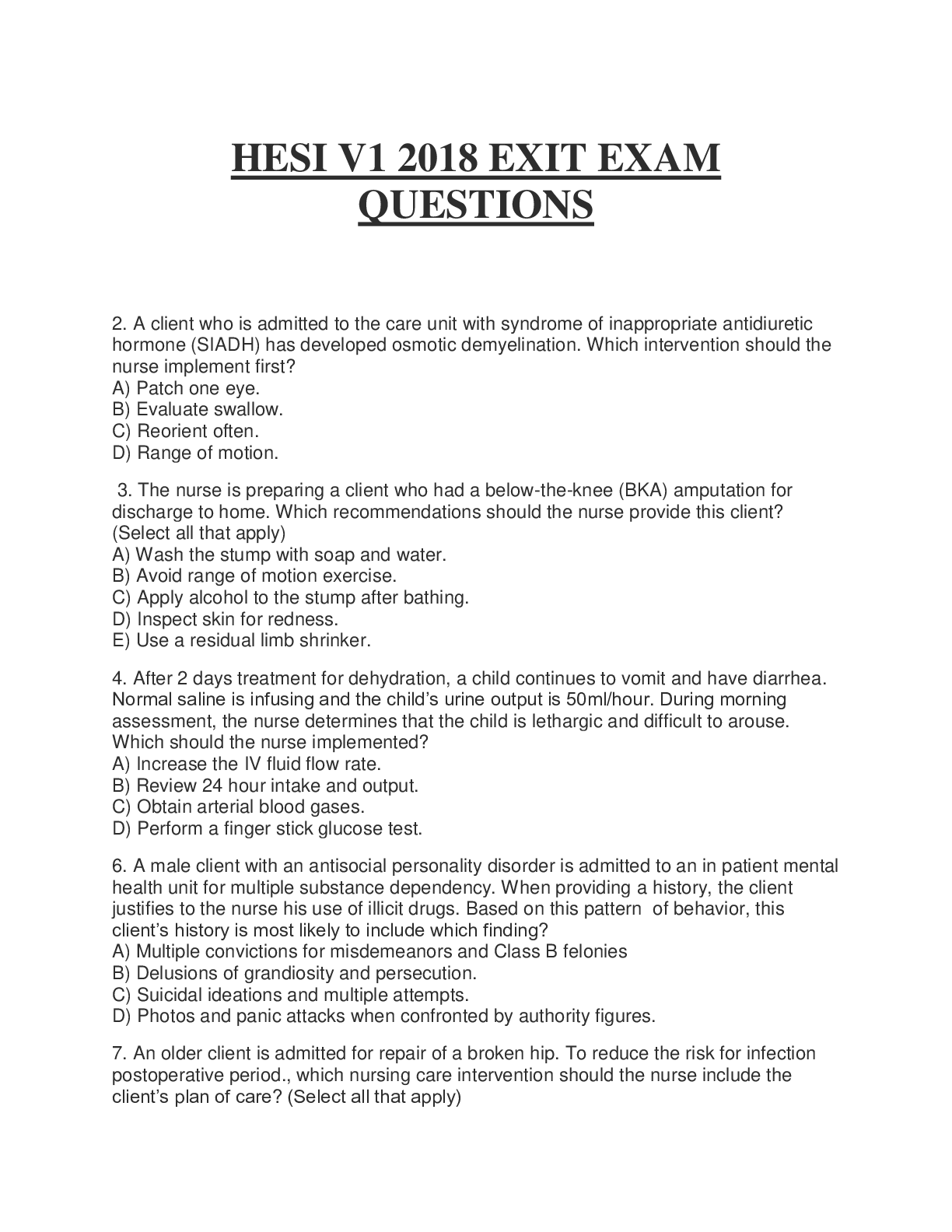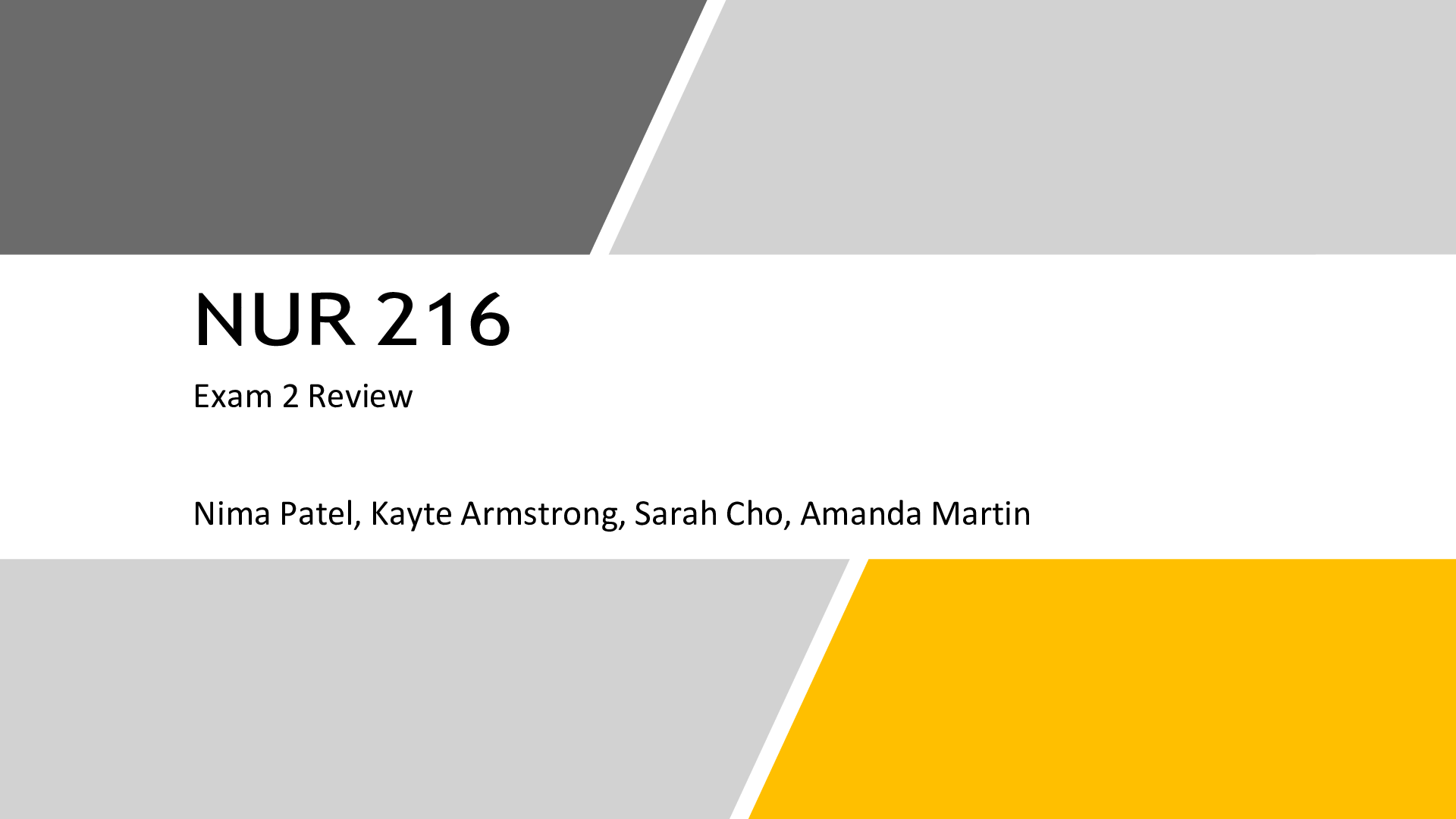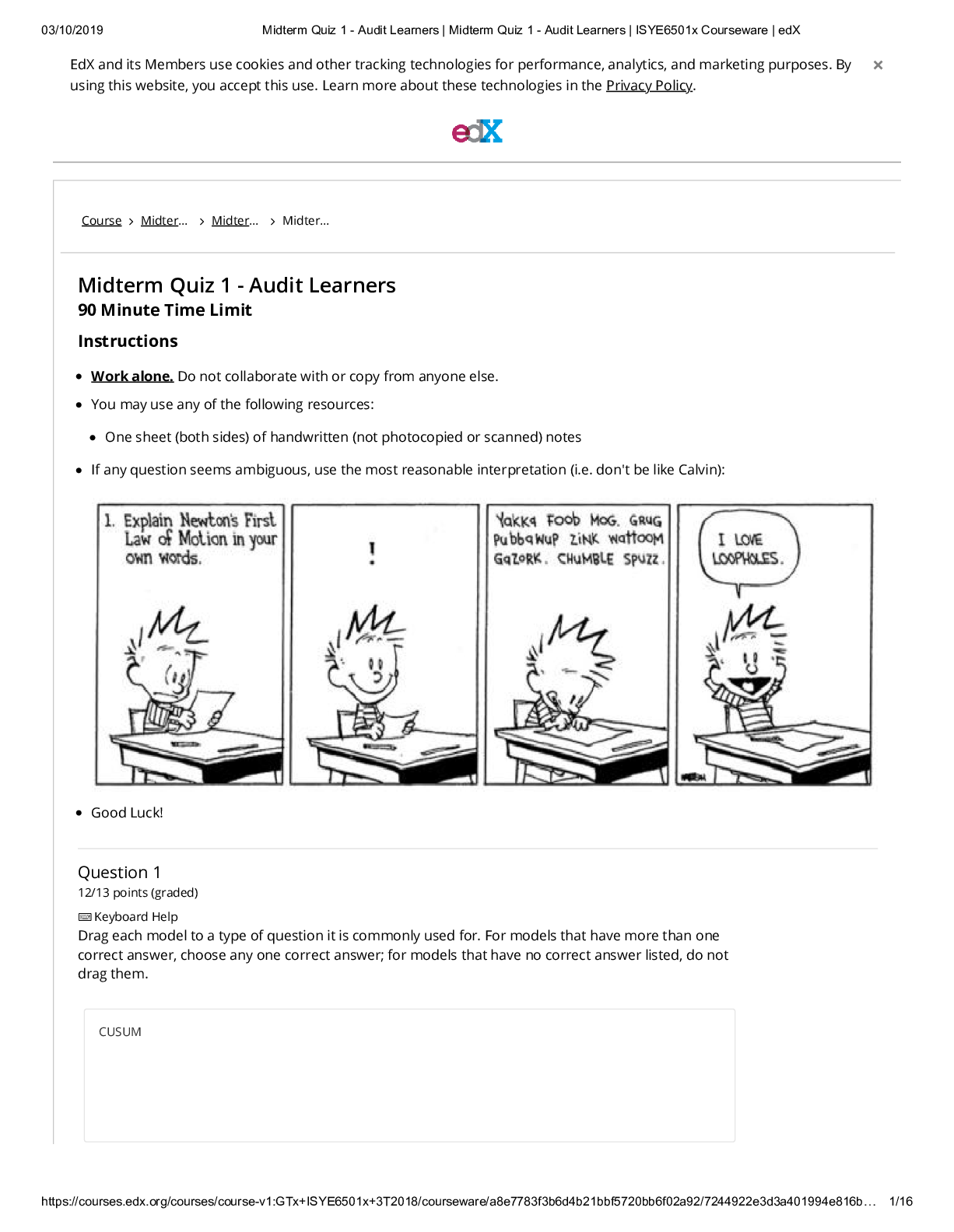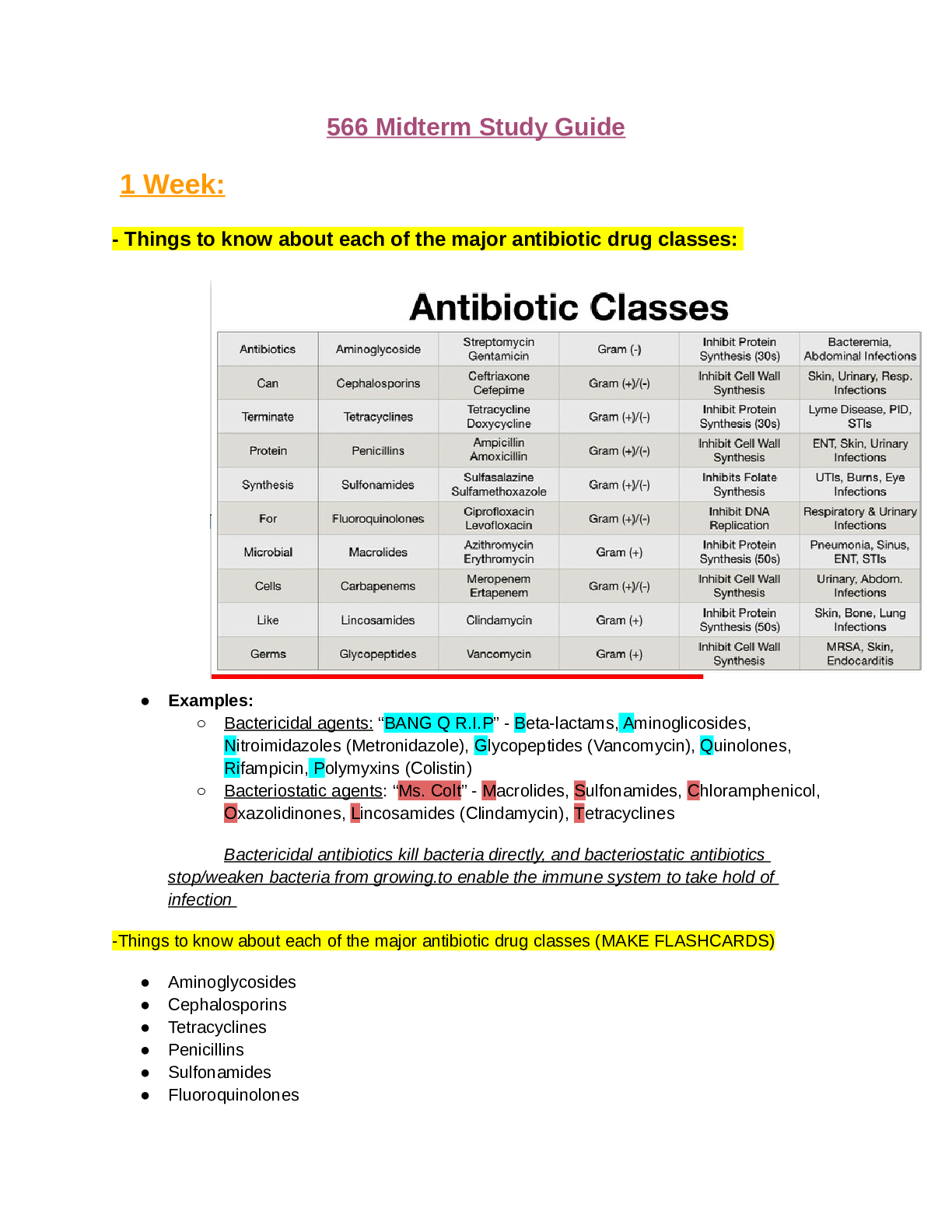*NURSING > EXAM REVIEW > NR 508 Midterm Exam Study guide to improve your grades (All)
NR 508 Midterm Exam Study guide to improve your grades
Document Content and Description Below
NR 508 Midterm Exam Consist of 50 Questions From a Random Test Bank of Questions from Chapters 1-4 (including Week 4 Content) and All Embedded Recorded Lectures. Information is taken from the followi... ng Areas: Highlighted areas are areas to help you understand the concepts better they are in NO way an indication of what you are guaranteed to see on the exam. Remember these are random some of your classmates may not have the same question that appear on your exam. PLEASE NOTE that this study guide may not be inclusive of all topics you may see on the exam 1 NP Practice 1-2 Questions 2 Birth Control Contraindications 1-2 Questions 3 Treatment of CHF 5-15 Questions • Know First Line Treatment in CHF • Side Effects of Diuretics • Side Effects of Ace Inhibitors 4. Treatment of Hypertension 5-6 Questions • Know First Line Treatment in Hypertension • Side Effects of Diuretics • Side Effects of Ace Inhibitors 5. Treatment of Fungal infections 3-5 Questions • Know How to Treat Various Fungal Infections • Common Uses 6. Treatment of Abnormal Heart Rhythms 4-5 Questions • Know Treatment of Arrhythmia 7. Treatment of Depression& Anxiety 4-5 Questions 8. Treatment of Parkinson 4-5 Questions • Know Treatment of Parkinson Disease 9. Treatment of Alzheimer’s 4-5 Questions 10. Treatment of Acne 1-2 Questions 11. Clotting Factor in Vitamin K1-2 Questions CONGESTIVE HEART FAILURE (CHF): *Refer to your CHF PowerPoint Slides • EPIDEMIOLOGY: o Most common cause of hospitalization over 65 years of age. o Afflicts more than 2 million Americans annually. o 900,000 hospitalization per year. o PROGNOSIS: Poor ▪ Untreated, 82% of men die within 6 years of onset. ▪ Untreated, 67% of women die within 6 years of onset. ▪ Treated, mortality was reduced to 40% Causes: Myocardial Infarction, hypertension, coronary artery disease, Hyperthyroidism, Beriberi, anemia, arteriovenous shunts. • HEMODYNAMIC PROPERTIES: Consequences of CHF o Subnormal Cardiac Output > decreased exercise tolerance, tachycardia, pulmonary edema, cardiomegaly o Neurohumoral Reflexes: Reflex tachycardia, increased sympathetics, increased Renin. o Myocardial Hypertrophy occurs, to maintain cardiac performance. ▪ Ventricular dilation helps to maintain cardiac output to an extent (due to Starling's Law), but past a certain point it can no longer help. o Factors affecting cardiac performance: ▪ Higher preload: due to increased blood volume and venous tone. ▪ Higher afterload: due to hypertension, increased arterial tone. ▪ Lower contractility > lower inotropic state ▪ Higher heart rate, due to reflex tachycardia o Edema: Especially pulmonary edema, but also peripheral. Results from decreased Cardiac Output, by two mechanisms: ▪ Decreased CO ------> impaired venous return > higher capillary hydrostatic pressure ▪ Decreased CO ------> decreased renal perfusion > activate renin angiotensin system RAS > aldosterone causes higher Na+ and fluid retention. • TREATMENT: o CARDIAC GLYCOSIDES: See CHF PowerPoint Slides : o MECHANISM: Inhibit Na+/K+-ATPase Pump > increased intracellular Na+ in myocardium ------> decreased expulsion of Ca+2 in myocardium > tonically higher levels of intracellular Ca+2 > increased myocardial contractility o MECHANICAL ACTION on HEART: ▪ Increased myocardial contractility ▪ Bradycardia, due to reduced sympathetics. ▪ Increased Cardiac Output, due to reduced TPR (from reduced sympathetics) and increased inotropic state. o ELECTRICAL ACTION on HEART: ▪ Direct Effect on AV Node: Increase risk of heart block ▪ Decrease the rate of rise of Phase-0 depolarization at AV node. ▪ Prolong refractory period at AV-Node ▪ Decrease conduction velocity at AV-Node. ▪ Direct Effect on Purkinje Fibers: ▪ Increase automaticity > increased risk of arrhythmias. This occurs by two mechanisms: ▪ Increase the slope of Phase-4 depolarization. ▪ Elevate the resting membrane potential of the SA-Node, as a consequence of inhibiting the Na+/K+-ATPase ▪ Decrease conduction velocity ▪ Parasympathomimetic Effects: Digitalis increases vagal stimulation, by three mechanisms: ▪ Baroreceptor Sensitization ▪ Central Vagal Stimulation ▪ Facilitate muscarinic transmission at myocardial cells ▪ Hypokalemia potentiates the cardiotoxic effects of Digitalis, since digitalis deprives cardiac cells of K+. This effect of K+ is opposite to the effect seen with quinidine. o KIDNEY DIURESIS: Digitalis effect on kidney is indirect -- resulting from improved cardiac output. If cardiac output does not improve, then there will be no diuresis. ................................................................CONTINUED.................................................................. [Show More]
Last updated: 2 years ago
Preview 1 out of 34 pages
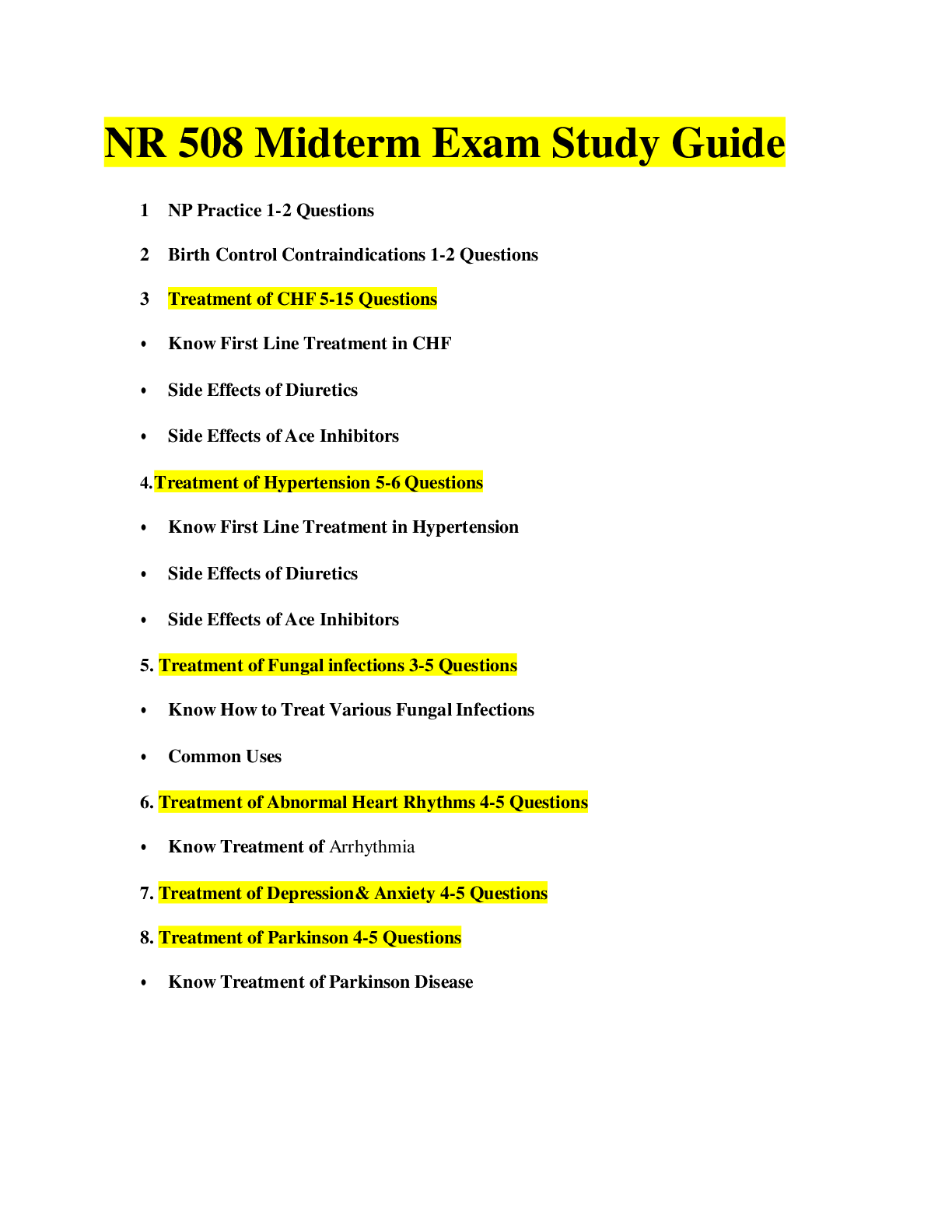
Buy this document to get the full access instantly
Instant Download Access after purchase
Buy NowInstant download
We Accept:

Reviews( 0 )
$12.50
Can't find what you want? Try our AI powered Search
Document information
Connected school, study & course
About the document
Uploaded On
Apr 12, 2021
Number of pages
34
Written in
Additional information
This document has been written for:
Uploaded
Apr 12, 2021
Downloads
0
Views
84

